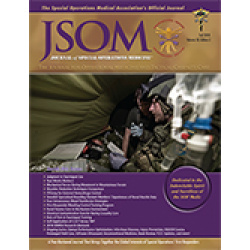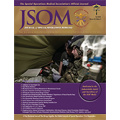The Combat Application Tourniquet Versus the Tactical Mechanical Tourniquet
Beaven A, Ballard M, Sellon E, Briard R, Parker PJ 18(3). 75 - 78 (Journal Article)
Background: Exsanguination from limb injury is an important battlefield consideration that is mitigated with the use of emergency tourniquets. The Combat Application Tourniquet (C-A-T®) is the current British military standard tourniquet. Methods: We tested the self-application of a newer tourniquet system, the Tactical Mechanical Tourniquet (TMT), against self-application of the C-A-T. A total of 24 healthy British military volunteers self-applied the C-A-T and the TMT to their mid thigh in a randomized, sequential manner. Popliteal artery flow was monitored with a portable ultrasound machine, and time until arterial occlusion was measured. Pain scores were also recorded. Results The volunteers allowed testing on their lower limbs (n = 48 legs). The C-A-T was applied successfully to 22 volunteers (92%), and the TMT was successfully applied to 17 (71%). Median time to reach complete arterial occlusion was 37.5 (interquartile range [IQR], 27-52) seconds with the C-A-T, and 35 (IQR, 29-42) seconds with the TMT. The 2.5-second difference in median times was not significant (ρ = .589). The 1-in-10 difference in median pain score was also not significant (ρ = .656). The success or failure of self-application between the two tourniquet models as assessed by contingency table was not significant (p= .137). Conclusion: The TMT is effective when self-applied at the mid thigh. It does not offer an efficacy advantage over the C-A-T.


 English
English 




